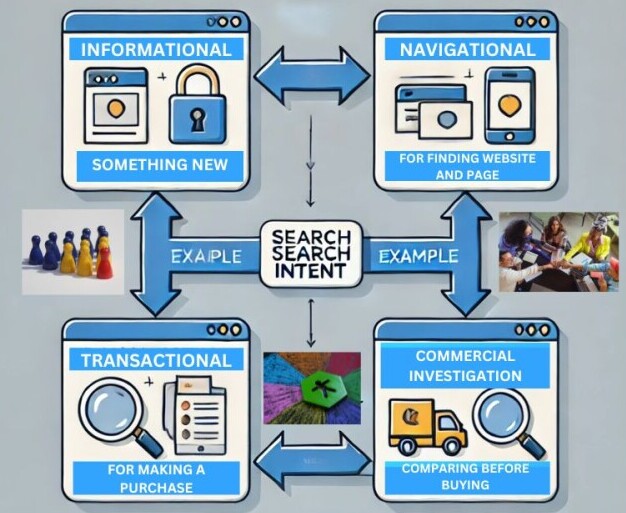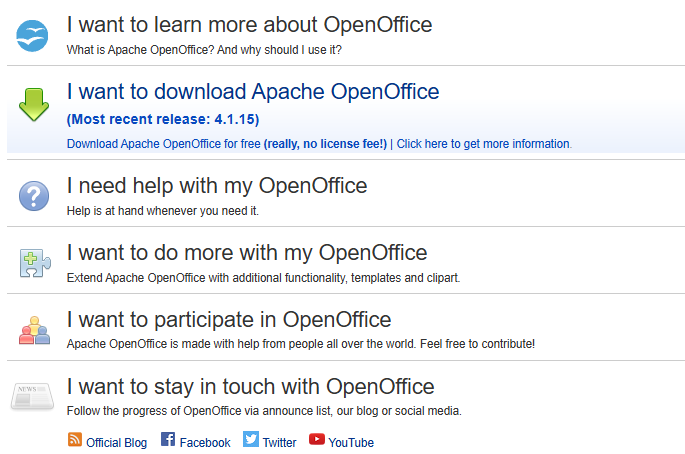
Keyword research is like panning for gold in well-panned waters, but It’s what points your content in the right direction, ensuring it reaches those who are actually looking for what you offer.
Understanding the foundation is crucial if you are among those just getting started in beginner keyword research. Without it, you’ll be searching blindly in the muddy online business stream.
At its core, keyword research involves identifying words and phrases that potential customers use in search engines to find products, services, or information. Think of it as catching a glimpse of what’s going on in your audience’s minds. This process sets the stage for creating content that connects.
Beginners might wonder why fuss over keywords. They’re a bridge between what people are searching for and the content you’re creating. What does a bridge do? It connects!
When done right, keyword research also helps your site climb the search engine ranks, pulling in traffic that actually engages and converts rather than just passing through.
I hope you find this keyword research guide helpful as you investigate and implement SEO keywords in your online business content.
Lay the groundwork with the right SEO keywords and set yourself up for online success.
They shape the way you create and optimize content. Whether you’re running a blog, launching a product, or just sharing insights, a targeted approach makes all the difference.
So, what makes keyword research so crucial for beginners?
Simple: direction. With the right keywords, you can direct your content strategy, ensuring every piece you put out speaks directly to your target audience’s needs and desires.
It’s about speaking their language from the get-go and ensuring your efforts online aren’t just noise.
The Ultimate Guide To Keyword Research Begins
Decoding Search Intent
Do you ever wonder what people aim for when they type something into a search engine?
That aim is called search intent, and ensuring your content hits the mark is vital. Knowing the ‘why’ behind a search means you’re not just guessing what your audience wants but tailoring your content to give them what they want.
Search intent falls into several categories:
- Informational when someone’s looking to learn something new.
- Navigational is for finding a specific website or page.
- Transactional is all about making a purchase.
- Commercial investigation is comparing options before buying.
For beginners, understanding these types is quite enlightening.

Imagine you’re writing content about hiking boots. If your audience searches for “best hiking boots for beginners,” they’re likely in the commercial investigation stage, exploring options. Tailor your content to guide them through buying, offering insights and comparisons.
Matching your content to search intent builds credibility and authority in the eyes of both users and search engines.
Search engines favor content that matches consumer intent, making it more likely to appear in relevant searches. Let’s face it: Page one of Google is prime real estate.
So, how do you determine search intent? Dive into the Google Search results pages for keywords you’re targeting. Look at the top-ranking pages and see what kind of content is dominating. Are they blogs, product pages, or customer guides? This gives you a clear picture of what users want.
Use this understanding of search intent to enhance your keyword strategy. It’s one thing to attract visitors, but aligning with their intent means you’re providing genuine value, leading to a better user experience and more fruitful engagements.
Exploring Types of Keywords
Successful content marketing requires knowing what types of keywords exist. Each type serves a different purpose and reaches different user intents, laying the groundwork for your content strategy.
So, where do you start? Let’s break it down.
| Keyword Type | Description | Example | Search Volume | Competition |
|---|---|---|---|---|
| Short-tail Keywords | Broad and general terms, usually 1-2 words, with high search volume but fierce competition. | “Shoes” | High | High |
| Long-tail Keywords | More specific phrases, usually 3 or more words, with lower search volume but less competition. | “Comfortable running shoes for women” | Low to Moderate | Low |
Short-tail keywords are broad and general terms, usually one or two words, like “shoes” or “dresses.” They’re great for reaching a wide audience, but watch out—competition can be fierce because everyone’s gunning for those high-traffic terms.
Now, long-tail keywords are the more targeted phrases, often three words or more, like “comfortable running shoes for women.” These tend to have lower search volumes but are gold when drawing in more specific, intent-driven traffic.
They help you zero in on what your audience is really searching for, reducing bounce rates significantly by aligning with what people actually want.
Primary keywords are the main focus of your content—the big idea, if you will. These are the keywords you build around. Meanwhile, LSI keywords, short for Latent Semantic Indexing, are closely related terms. They bolster your content without stuffing it with the same words, making it more accessible and natural-sounding, which search engines love.
Here’s an example: sticking with running shoes. BAM! Do you see it? That’s right! Running shoes is the primary keyword in an article focused on running shoes. LSI keywords would be rubber soles, colorful laces, arch support, running shoes for women, etc.
Understanding these categories can help you diversify your keyword list, so you’re not just leaning on generic terms but building a nuanced strategy. This allows you to appeal to different user needs and intents, increasing your chances of ranking well across various searches.
Remember to mix it up. Blend short-tail and long-tail with a healthy dose of LSI keywords to cover all your bases. Armed with this understanding, you’re on your way to creating content that not only spikes in visibility but truly connects with readers.
I know this article is for beginners, but I will get a little technical on you. Don’t worry about understanding all of it; just catch the drift, if you will.
Using Primary Keywords
Primary keywords should be strategically placed throughout your content to signal to search engines what the page is about. Here’s where to use them:
- Title: The primary keyword should appear in the title of your blog post (e.g., “A Beginner’s Guide to Running Shoes”).
- Meta description: Include it in your meta description for better visibility in search engine results.
- Headings (H1, H2, H3): Place the primary keyword in your main heading (H1) and use variations in subheadings.
- URL: Make sure your URL reflects the primary keyword (e.g., yoursite.com/running-shoes-guide).
- First paragraph: Use the primary keyword early in the article, preferably within the first 100 words.
- Throughout the content: Sprinkle the keyword naturally throughout the text, aiming for a keyword density that feels organic, not forced.
Using LSI Keywords
LSI keywords help reinforce the primary keyword and expand the topic. Here’s where and how to use them:
- Subheadings: Use LSI keywords in your subheadings to break the content into relevant sections (e.g., “How to Choose Running Shoes” or “Best Running Shoes for Marathon Training”).
- Body of the content: Organically include LSI keywords in the body text. As you explain different aspects of running shoes, terms like “cushioning,” “arch support,” “trail running shoes,” or “lightweight running shoes” will naturally fit in.
- Image alt text: If you include images, you can describe them using LSI keywords (e.g., “best running shoes for high arches”) in the alt text.
- Related content links: Use LSI keywords when linking to other relevant content within your site (e.g., “Check out our guide on choosing the best trail running shoes”).
Ugh! This is so confusing! Not really. You will be surprised at how many latent semantic indexing keywords you will use by writing naturally.
Cmon, we have a long way to go. When you finish this article, you will be a keyword GENIUS!
Strategic Use of Keyword Variations
Keywords aren’t set in stone. A little creativity lets you adapt and expand how you approach them. Variations are vital to enriching your content and reaching wider, more niche audiences.
Crafting content that includes keyword variations means you won’t sound repetitive or robotic, keeping both your audience and search engines engaged.
You can spruce up those core keywords by using slight modifications and related terms that mean the same thing. This keeps everything fresh while ensuring relevancy.
Balancing keyword usage is an art. Too much repetition? You risk keyword stuffing, turning readers off, and possibly flagging search engines. Use variations to weave keywords naturally into your content.
But how do you find these variations? Tools like Google Trends or even the ‘Related Searches’ feature at the bottom of a Google results page are goldmines. They show you how users tweak their searches, opening up new angles for you to explore.
Remember, the goal is to communicate naturally.
Readers are human and respond better to content that doesn’t feel forced. When planning your keywords, consider how they can seamlessly fit into your content as part of a conversation rather than a checklist.
This creates a more engaging experience where information flows , giving you an edge in both search rankings and user engagement.
Analyzing Keyword Metrics
Understanding which keywords will give you the best bang for your buck involves understanding metrics. Yuck, I know.
These indicators show how effective your keywords are likely to be, and they guide you in making informed decisions.
The big players in keyword metrics include search volume, competition level, and cost-per-click (CPC). Search volume tells you how often a keyword is searched. The higher the volume, the more potential traffic, but beware—high volume often means high competition.
Speaking of competition, this metric indicates how many others are targeting the same keyword. A keyword with fierce competition might be tough to rank for, especially if you’re just starting out.
Then there’s CPC, commonly used in paid advertising. It shows the average cost advertisers pay for each click. It’s a good indicator of the keyword’s value — if people are willing to pay more, there’s clearly something worth chasing.
Not all keywords you explore will make it onto your list. Metrics help you sift through possibilities to find those gems that balance good search volume, manageable competition, and if relevant, affordable CPC.
Keyword research tools come in handy to stay on top of these numbers. They provide quick insights into which metrics matter for your chosen words. Using these tools smartly saves you time and keeps your strategy sharp.
The key takeaway here is to avoid making decisions based on gut feelings or guesswork. Use hard data to support your choices and make your keyword strategy as effective as possible.
There are many keyword research tools you can find with a search. My favorite is JAAXY.
Tools and Techniques for Keyword Discovery
In keyword research, having the right tools is like having a superpower.
They allow you to uncover opportunities you might miss on your own. When you’re starting, finding the right tool for the job is crucial as it saves time and streamlines your research process.
Among the top tools out there, Google’s Keyword Planner is a classic. It’s user-friendly and provides useful insights into search volume and competition.
Another crowd favorite is SEMrush, which offers a comprehensive look at competitor strategies and keyword gaps you could exploit.
For those on a budget, Ubersuggest by Neil Patel offers a free and effective solution for basic keyword research. It’s excellent for generating long-tail keywords and provides competitive analysis.
AnswerThePublic can also be a unique resource, giving you a visual map of questions and searches related to your keywords.
| Tool | Description | Features | Value for Beginners |
|---|---|---|---|
| Google Keyword Planner | A free tool by Google, offering search volume, competition data, and keyword suggestions. | Search volume, keyword ideas, competition analysis, and ad spend data. | Great starting point for beginners due to ease of use and cost-effectiveness. |
| SEMrush | A comprehensive tool for SEO, keyword research, and competitor analysis. | In-depth SEO data, keyword gap analysis, site audit, and backlink tracking. | Ideal for those looking to go beyond basic keyword research, though it comes with a learning curve. |
| Ubersuggest | An affordable tool by Neil Patel that offers keyword research and SEO metrics. | Keyword suggestions, domain overview, content ideas, and backlink data. | Beginner-friendly and cost-effective, making it great for those just starting out with limited budget. |
| AnswerThePublic | A visual tool that shows common questions and searches around specific keywords. | Visual keyword map, question-based search terms, and data visualization. | A creative approach for beginners to explore user intent and content ideas. |
While tools are great, don’t underestimate the power of manual techniques. Browsing forums, social media, or even customer reviews can reveal what language your target audience naturally uses, sparking new keyword ideas.
Balancing tools and manual methods allows for a greater understanding of your audience’s needs and language. This multifaceted approach lets you stay agile, adapting to changing search trends and audience behaviors.
Building and Organizing Your Keyword List
Now that you’ve got a bunch of potential keywords, it’s time to sort through the noise and build a list that really counts. A well-organized keyword list saves time and helps refine your content strategy.
First, categorize your keywords based on search intent and type. This means separating your short-tail from long-tail keywords and informational from transactional keywords. This helps channel them to appropriate content types, like blog posts, product pages, or guides.
Next, consider creating a spreadsheet (Google Sheets is a solid go-to) to easily filter and sort keywords by metrics like search volume and competition level. Keeping tabs on such data helps you quickly adjust your strategy as necessary.
Another option for spreadsheets is Apache Openoffice. Openoffice is open source and free. What? Free. What?? FREE! It works much the same as Excel, but with some differences. I used to use it and it is an excellent free tool. Check it out.

Grouping keywords into clusters can also be beneficial. These clusters, organized by themes or topics, help in planning comprehensive content that covers all angles of what your audience might be searching for. It’s about creating content that serves a holistic user experience, answering varied but related queries in one place.
Regular reviews of your list ensure that it stays relevant. Popular keywords today may not hold the same significance tomorrow, especially as trends shift and new vernaculars emerge.
So, staying on top of how your list evolves will make sure your content remains fresh and in tune with what your audience is searching for.
Optimizing Your Content with Keywords
Once you’ve finalized your keyword list, it’s time to integrate it seamlessly into your content. But beware: this is more art than science. Keyword optimization isn’t about stuffing every paragraph with your chosen terms but blending them naturally into engaging content.
Write naturally, letting it flow smoothly while keeping your keywords handy so you can find a discreet home for them without them raising any flags.
Focus on key areas like titles, headers, and introductions. These spots are prime real estate for showing search engines what your content is about. However, always keep readability in mind. If a sentence feels forced or awkward, rephrasing it or placing the keyword elsewhere is better.
Incorporate keywords into meta descriptions and alt text for images, providing context and making your content more accessible to search engines. This enhances SEO and improves user experience by providing relevant information.
A common pitfall to avoid is using the same keyword repeatedly, which can make the content feel spammy and lead to penalties from search engines. Instead, lean on those variations and related terms to provide a fuller picture for users and search engines.
Include internal links that make sense contextually, using anchor text that naturally integrates keywords. This practice supports site navigation and encourages readers to explore more, boosting engagement and time spent on your site.
Remember, well-optimized content involves more than just keywords. It’s about providing value, answering questions, and meeting the needs of your audience. When done right, optimization enhances the user experience, drawing in and retaining your target audience.
Tracking and Refining Your Keyword Strategy
It’s crucial to know that keyword research isn’t a one-and-done task; it’s an ongoing effort. Once your content is out there, tracking its performance isn’t just helpful—it’s necessary to ensure long-term success and refine your strategy as needed.
Start by using tools like Google Analytics to monitor your keywords’ performance. Check which pages are getting traffic, what searches they appear for, and how visitors move throughout your site. These insights help highlight what’s working and what might need some tweaking.
Review your keyword rankings regularly to see how changes in search algorithms or market trends affect them. Staying on top of these changes helps you adapt and maintain your online visibility.
Another important aspect is A/B testing different headlines or meta descriptions to see which combinations do better with your audience. This trial-and-error process can offer surprising insights into the effectiveness of various strategies.
Regularly updating and expanding your content based on keyword performance data keeps it fresh and relevant. As new keywords come into play or older ones lose traction, your adaptability ensures you aren’t left behind.
Remember, being flexible and ready to shift strategies keeps you ahead in the keyword game. Your ability to refine and evolve your approach will boost your SEO efforts and, ultimately, the success of your content.
Phew! Take a breather, and let me know if you have any questions in the comments below.
Dave

THANKS FOR READING MY BLOG!
I appreciate your taking the time to learn important aspects of keywords and how they are used to best effect. If you are looking for a great place to build your business, I would be thrilled to have you join me at Wealthy Affiliate Marketing. We’ve got you covered no matter what business you want to create. Start building your online business today. You’ll be glad you did. -D
Yourturnmarketing.com

